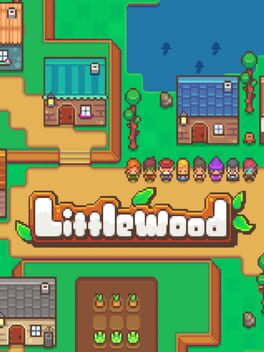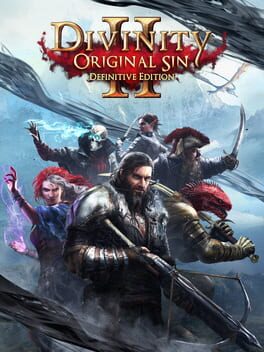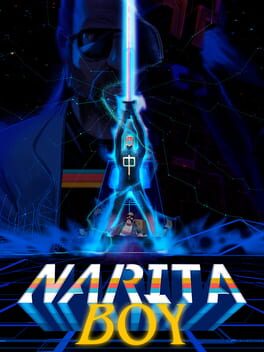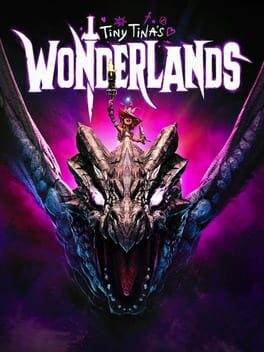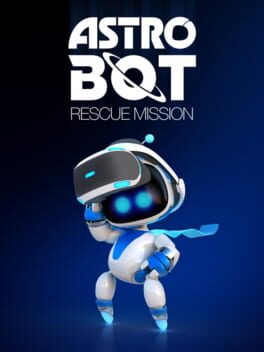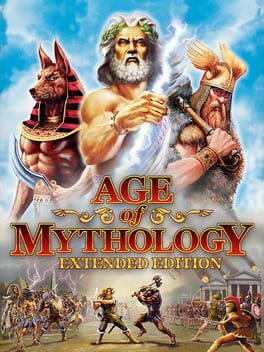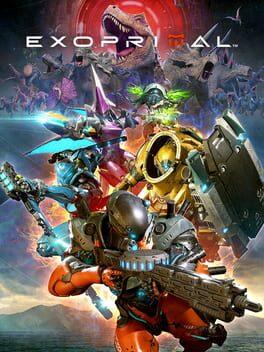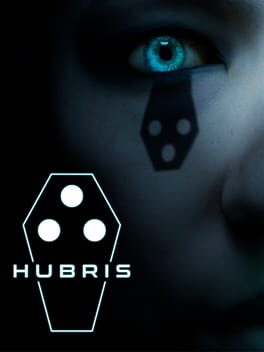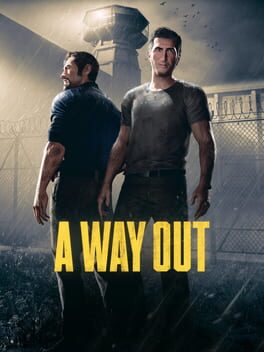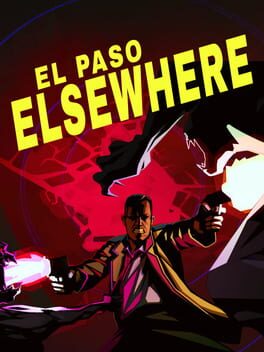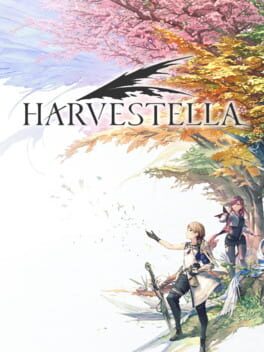MrDeadshot
2019
Littlewood is a fun little time waster that works perfectly on the Steam Deck. It’s a simple resource gathering and crafting game where you get resources, turn them into materials and build a village. There is no combat, time limit or any other type of stressful component. The more you advance in the story the more villagers will come to your village - all with their own demands and cute little story lines. Don’t expect much depth or some crazy writing out of this, but it is a very laid-back and chill experience that works both in small bursts or longer sessions. The main story can be completed in around 15 hours, but going for 100% completion and villager satisfaction will take a lot longer. The presentation is cute with its reduced and colorful pixel art style and relaxed music and sound effects. The best thing about this game is the fully terraformable village. You can not only place buildings, vegetation and decorations to your liking but also put streets, paths, mountains, rivers, ponds wherever you like without restrictions. Changing things up is easily achievable without wasting precious resources or materials. So, if you are a creative person, you can really dive deep into creating your ultimate fantasy town. Or just appreciate the many amazing creations in the Steam Community.
This one is a huge step up from the first game in the story and dialogue department. I enjoyed it much more and actually finished it. I am still not 100% sold on the series. I can see why people love it so much, because it‘s a min/max-players dream come true. There are so many crazy things you can do and try to break the game balance. It's certainly an El Dorado for creative players who love to optimize their parties to the max. Unfortunately I am not that kind of gamer. I usually enjoy deep characters and battle systems, but it can get frustrating here if you are not 100% into the systems because of some insane difficulty spikes or just plain unfair encounter designs.
So I decided to play on easy, which was the right choice and made the game much more enjoyable for me. To be honest, I don‘t like the rather slow turn-based-battle-system with the constant status changes and physics that much. It can be confusing and unclear what happened and the controls and camera can get a bit fiddly. Another problem is that the last act really falls apart. Quest lines become super-unclear and there are some overly hard and frustrating battles. I also don‘t like how the game is divided into acts and how you can‘t go back to former acts and areas. Missed some quests on that island? Well, that‘s your problem. And they really need to overwork the user interface. The inventory system is a huge mess. Nevertheless I enjoyed my time with the game. Especially the first half of the game is great.
So I decided to play on easy, which was the right choice and made the game much more enjoyable for me. To be honest, I don‘t like the rather slow turn-based-battle-system with the constant status changes and physics that much. It can be confusing and unclear what happened and the controls and camera can get a bit fiddly. Another problem is that the last act really falls apart. Quest lines become super-unclear and there are some overly hard and frustrating battles. I also don‘t like how the game is divided into acts and how you can‘t go back to former acts and areas. Missed some quests on that island? Well, that‘s your problem. And they really need to overwork the user interface. The inventory system is a huge mess. Nevertheless I enjoyed my time with the game. Especially the first half of the game is great.
2021
An overlooked gem of the Retro-Metroidvania craze. The presentation of the game is just sublime, offering a unique and highly stylish ride through crazy 16-bit vistas with an amazing synthwave soundtrack. The attention to detail is often staggering and rarely matched by other games. While the gameplay is nothing outstanding or snappy, it is fun from beginning to end and avoids overly hard difficulty spikes like many other games in the genre. This is mostly a relaxed, sometimes slightly challenging 5-7 hours escapism with a pretty decent story attached to it. There isn’t much replay value or innovation to be found but still highly recommended.
2022
Not-really-an-indie-game Dave the Diver is a charming mix between crafting, managing a restaurant and exploring the ocean with a great 2,5D presentation. The gameplay expands over time and introduces new systems and quirky characters regularly. Better equipment lets the player dive deeper into the ocean, getting better resources to craft even better equipment. And make more money by capturing and serving more rare fish in the restaurant. There are quite a few systems to take care of but none of them is very deep or complex and mostly revolve around mini-games. There is also no time pressure or danger of going bankrupt. Overall it’s a very laid back and relaxing game that also works perfectly on the Steam Deck. Just don’t expect deep gameplay or truly engaging mechanics. It’s a simple game with a lot of heart and charm.
First things first: Tiny Tina’s Wonderland isn’t as good as Borderlands 3. But it is not a DLC turned into a full price game either. It’s a fully fledged spin-off to the series that comes with a good chunk of new and varied content. The idea isn’t new, it picks up the premise of one of the most popular Borderlands DLC - Tiny Tina's Assault on Dragon Keep - and puts the player into a role-playing game in the Borderlands universe run by Tiny Tina as the dungeon master. The gameplay is still the same. Run around in varied and beautiful environments, kill hordes or different enemy types and get loot and level ups. It’s just presented as a tabletop RPG where Tiny Tina is the narrator including fun discussions between the other players. Even when the NPCs players never show up in the game itself, which feels a bit off.
The class system has been attuned to the new settings. The player can choose between different fantasy classes and even go multiclass later. Every class comes with its own skill tree. Grenades from the original games have been changed against magic spells which essentially work the same but are more varied and fun to use. There is also a slot for melee weapons that mostly consist of axes and swords. The main weapons are still guns. Some have been altered to fit the fantasy setting more but there are still machine guns, rocket launchers and pistols as well which don’t fit the setting. I would have wished for a more attuned weapon pool but then again, what would Borderlands be without machine guns and rocket launchers?
While the main story can be finished in around 10 hours there are tons of optional quests and content in the game that put it beyond the 25 hours mark. The problem many people have with the side content is that it’s mostly arena based. Many of the mini dungeons that can be found on the world map are just random arenas with random enemy hordes that you fight off in waves. I didn’t mind that because there is still a lot of variety in the encounters thanks to a good range of different enemy and area types. But I can see why people feel that this is a cheap method to offer content. Still, there are also lots of longer optional quest lines with extensive voice acting and sometimes even whole, large areas that aren’t part of the main story. There is even a rogue-like mode after beating the campaign. So selling this for full price is justified in my book and doesn’t feel like a cheap cash grab.
The class system has been attuned to the new settings. The player can choose between different fantasy classes and even go multiclass later. Every class comes with its own skill tree. Grenades from the original games have been changed against magic spells which essentially work the same but are more varied and fun to use. There is also a slot for melee weapons that mostly consist of axes and swords. The main weapons are still guns. Some have been altered to fit the fantasy setting more but there are still machine guns, rocket launchers and pistols as well which don’t fit the setting. I would have wished for a more attuned weapon pool but then again, what would Borderlands be without machine guns and rocket launchers?
While the main story can be finished in around 10 hours there are tons of optional quests and content in the game that put it beyond the 25 hours mark. The problem many people have with the side content is that it’s mostly arena based. Many of the mini dungeons that can be found on the world map are just random arenas with random enemy hordes that you fight off in waves. I didn’t mind that because there is still a lot of variety in the encounters thanks to a good range of different enemy and area types. But I can see why people feel that this is a cheap method to offer content. Still, there are also lots of longer optional quest lines with extensive voice acting and sometimes even whole, large areas that aren’t part of the main story. There is even a rogue-like mode after beating the campaign. So selling this for full price is justified in my book and doesn’t feel like a cheap cash grab.
Mario was the undisputed king of 3D platformers since the N64 days. But every king has to fall someday and a new one has to arise. The new king is Astro Bot. A super cute little robot that is already known from the free Playroom Demo. Astro Bot: Rescue Mission is basically Mario 64 where you travel to small worlds, collect coins and – instead of stars – missing crew members to unlock new levels. The design of the five worlds is outstanding, the controls are tight and the graphics are fantastic. There is a lot of charm, colour, unique art-style and an amazing soundtrack. Astro Bot jumps across chasms, on moving platforms, dodges deadly obstacles and jumps on or smashes a good range of quirky enemies. But what really takes it to the next level is the way the developer implemented VR-technology. Instead of just “watching” the screen the player and its controller are entities inside the game world that can alter the levels. You have to look around obstacles, follow Astro Bot’s path with head movement and help him out with several virtual tools for your controller. For example you can shoot ropes that Astro Bot can balance on or you extinguish fire enemies with a water gun. Head tracking and gyro controls are masterly woven into the gameplay and provide a lot of change during the course of the game. All this especially comes into effect during the fantastic boss fights at the end of every world. You really feel like a part of the game instead of a disconnected observer that only controls the protagonist. Trust me on this: You have to experience it for yourself. Words, screenshots and videos don’t do this game any justice. Absolutely try it for yourself! Astro Bot: Rescue Mission is pretty much the perfect VR game. It’s easy to learn, perfectly showcases the capabilities of VR technology and is immensely fun to play with minimal risk for motion sickness. One could argue about the lengths of the game though. The 26 main levels can be finished in six to eight hours. There are 26 additional challenge levels which can get pretty hard, especially when going for gold medals. These add several more hours to the play time. And then there is a beautiful panorama level where you can collect little animated figures with your collected coins through a claw machine.
2024
Dragon’s Dogma 2 offers everything the first game offered: A beautiful open world to explore that has secrets and loot after every corner. Massive enemies to conquer with a battle system somewhere between Monster Hunter and Devil May Cry that is just super fun to engage with. A clever pawn system where you travel with up to three NPCs, one of your own creation and two from other players that can be hired and dismissed at will. Tons of weapons, armour and skills to play around with. No hand holding and a significant lack of modern quality of life features which makes the “adventure” part of the game shine even more. Because you actually have to plan your travels and can get into bad situations if you are not careful enough or badly equipped. And still, even when this game nails all these points and is very true to the original I left a tiny bit disappointed. Because while being very true to the original it doesn’t feel like a fully fledged sequel but more like a reimagination of the first game. It doesn’t help that almost every enemy type is known from the first game as well. And they didn’t even use all the old enemies and only added a few new ones. I also liked the more focused nature of the endgame of the original more. And there is nothing in Dragon’s Dragon 2 like Bitterblack Isle - the DLC Mega-Dungeon of the first game. Still, Dragon’s Dogma 2 is an amazing game that runs circles around most modern open-world RPGs and an absolute must-play for every RPG- and fantasy fan.
I have been playing this game since it was first released and it is still, to this very day, a great RTS game. Yes, this is "just" Age of Empires 2 with mythological creatures added, but who could not like this? The only thing that didn't age well are the graphics. The game is kinda ugly. Especially compared to the beauty that Age of Empires Definitive Edition is. But everything else still works great. Well, minus the pathfinding sometimes. The Enhanced Edition comes with the main campaign, the meaty Titans Campaign and the smaller Vikings campaign. All of those are great and I like the mission design more than in the Age of Empires 2 campaigns. The presentation is less dry and the missions are more creative - kinda similar to Warcraft 3. So if you are looking for a great RTS with some meaty single-player content look no further.
2019
If you are looking for a pure workout VR game, then this might fit your desires. PowerBeats VR for sure is a sweat-generating app where you punch incoming rocks and dodge virtual barriers.
Unfortunately the presentation of the game is very lackluster. This begins with the AI voice that leads you through menus. There are various visual styles for the stages but they look like some random environments from an asset store. The game just lacks a coherent visual style and theme, it feels put together randomly. There is no campaign, just 24 songs to choose from. Music of course is 100% subjective, but I didn’t like most of the songs all that much. There are several difficulty settings for the songs, but not each song comes with all difficulties. Some can just be played on Expert, others provide a larger range of difficulty settings. Why does not every song provide all settings?
And finally, PowerBeats VR also just lacks the satisfying feeling of hitting something that other games in the genre provide. It’s just not much fun to actually play the game and with so many better alternatives around I really can’t recommend this game.
Unfortunately the presentation of the game is very lackluster. This begins with the AI voice that leads you through menus. There are various visual styles for the stages but they look like some random environments from an asset store. The game just lacks a coherent visual style and theme, it feels put together randomly. There is no campaign, just 24 songs to choose from. Music of course is 100% subjective, but I didn’t like most of the songs all that much. There are several difficulty settings for the songs, but not each song comes with all difficulties. Some can just be played on Expert, others provide a larger range of difficulty settings. Why does not every song provide all settings?
And finally, PowerBeats VR also just lacks the satisfying feeling of hitting something that other games in the genre provide. It’s just not much fun to actually play the game and with so many better alternatives around I really can’t recommend this game.
2023
After the Beta I wasn’t all that interested in this game. But then I got it at a deep discount at Humble Bundle and gave it another try. The game certainly takes a while to click, but then it’s great, crazy fun. The best way to describe it for me is that it is a wild mix between Earth Defense Force, Overwatch, Anarchy Reigns. There are elements of hero shooters, third-person-brawlers, PvE and PvP components in the game. Everything is presented in an overarching story with quite a few quality cutscenes that get unlocked by participating in online matches. Yes, this game is online only with no way to play offline or with bots.
So how does this work? Players pilot exosuits that look like your typical anime-mecha. There are three different kinds of exosuits: assault, defense and support. Some of them excel in ranged combat, others are more melee oriented or focus on healing the team. Plus there are hybrids that fit more roles. They all have something in common: They feel unique and are fun to use. I didn’t dislike any of the mechs and rotated frequently between them to spice up the experience. Landing headshots with a sniper rifle feels just as satisfying as uppercutting a T-Rex or rescuing the whole team with a last second healing skill.
In most missions two teams of five players get matched against each other. Both teams have to fight against hordes of dinosaurs and accomplish certain mission targets. The goals are always the same for both teams, the team that achieves the goals faster gets a headstart in the final mission where both teams are in direct competition. In this phase the teams can fight each other directly to achieve one final goal. There are other mission types, like giant hordes or big boss fights where ten players play together but these are more rare. By beating the story, extra hard challenges and seasonal content gets unlocked.
Seriously, the feeling of the game is a bit hard to describe. It really is it’s own thing and a unique experience I recommend to everyone that likes Capcom games, hero shooters and/or horde shooters with some indirect and direct PvP put into the mix. Don’t get afraid of the PvP stuff too much. You always progress, even when you lose a game and I didn’t come across many people that took the game too seriously. It was mostly a great and relaxed time playing with others.
The aggressive monetization with loot boxes and season passes in a full-priced game is certainly questionable, but it can be safely ignored. There are no pay-to-win elements. On the tech side the game looks and sounds good. It ran without problems on high settings on my old 2070S. Late loading textures are an issue though and can look really jarring at times.
So how does this work? Players pilot exosuits that look like your typical anime-mecha. There are three different kinds of exosuits: assault, defense and support. Some of them excel in ranged combat, others are more melee oriented or focus on healing the team. Plus there are hybrids that fit more roles. They all have something in common: They feel unique and are fun to use. I didn’t dislike any of the mechs and rotated frequently between them to spice up the experience. Landing headshots with a sniper rifle feels just as satisfying as uppercutting a T-Rex or rescuing the whole team with a last second healing skill.
In most missions two teams of five players get matched against each other. Both teams have to fight against hordes of dinosaurs and accomplish certain mission targets. The goals are always the same for both teams, the team that achieves the goals faster gets a headstart in the final mission where both teams are in direct competition. In this phase the teams can fight each other directly to achieve one final goal. There are other mission types, like giant hordes or big boss fights where ten players play together but these are more rare. By beating the story, extra hard challenges and seasonal content gets unlocked.
Seriously, the feeling of the game is a bit hard to describe. It really is it’s own thing and a unique experience I recommend to everyone that likes Capcom games, hero shooters and/or horde shooters with some indirect and direct PvP put into the mix. Don’t get afraid of the PvP stuff too much. You always progress, even when you lose a game and I didn’t come across many people that took the game too seriously. It was mostly a great and relaxed time playing with others.
The aggressive monetization with loot boxes and season passes in a full-priced game is certainly questionable, but it can be safely ignored. There are no pay-to-win elements. On the tech side the game looks and sounds good. It ran without problems on high settings on my old 2070S. Late loading textures are an issue though and can look really jarring at times.
2022
Hubris is an impressive looking VR sci-fi action-adventure game that mixes climbing, swimming, crafting and shooting into a very focused, polished but also short VR game. All the elements are mixed well and are all fun to engage with minus the crafting which feels like an afterthought. Instead of just picking up health packs these need to be crafted in inconvenient ways because the inventory management is so damn fiddly. And making your 20th healing item in a space mixer isn’t exactly exciting. There is also a lot of scrap lying around that can be fused into materials which then can be used to upgrade the player’s pistol. Besides damage and magazine upgrades there are two unlockable fire modes, a shotgun and an SMG. Certainly more motivating than mixing healing items but ultimately just a way to lengthen the playtime.
Luckily, the rest of the game is a lot more fun. Climbing, swimming and shooting enemies doesn’t come with any greater depths or complex mechanics but still feels very satisfying and immersive. Enemy variety is limited but enough for the short runtime of 4-5 hours. The story is generic sci-fi that also feels like the middle part of some random TV show instead of a coherent storyline. Lots of background is missing and the characters are bland. But the artstyle of the locations and atmosphere are very good. And that completely without tapping into the horror genre and using cheap thrills. There aren’t creepy underwater monsters, just harmless looking jellyfish. There are also no jump scares. This can be a pro- or contra-point depending on what you are expecting from a space adventure. For me it was a nice change of pace after Resident Evil 4 and Vertigo 2.
Luckily, the rest of the game is a lot more fun. Climbing, swimming and shooting enemies doesn’t come with any greater depths or complex mechanics but still feels very satisfying and immersive. Enemy variety is limited but enough for the short runtime of 4-5 hours. The story is generic sci-fi that also feels like the middle part of some random TV show instead of a coherent storyline. Lots of background is missing and the characters are bland. But the artstyle of the locations and atmosphere are very good. And that completely without tapping into the horror genre and using cheap thrills. There aren’t creepy underwater monsters, just harmless looking jellyfish. There are also no jump scares. This can be a pro- or contra-point depending on what you are expecting from a space adventure. For me it was a nice change of pace after Resident Evil 4 and Vertigo 2.
2018
I finished this game in one sitting with a friend. It took us about six hours. Good value for the money spent, especially considering that only one of us had to buy the game and could share it online. A Way Out is 100% focused on coop-gameplay. There is no way to play this game alone or with a computer controlled partner. This leads to some bonding moments between the players and a real team-work feeling over the course of the whole game because every level is fully committed to being a coop-experience. The gameplay itself is kinda mid though. It’s mostly generic third-person-action adventure gameplay with some climbing, jumping and light puzzle solving. The crime story and characters are pretty good and there is a really well done twist towards the end which makes the whole experience worthwhile. And there just aren’t any other games like this which makes it a unique experience.
2023
It is obvious that a lot of heart and soul went into making Robocop: Rogue City. This game nails the aesthetics and atmosphere of the first two movies. Thanks to Unreal Engine 5 the areas of this game look realistic and capture the style of desolate 80’s Sci-Fi Detroit perfectly. Advanced lighting and filter techniques make this look retro and modern at the same time. The same goes for frequent firefights with all kinds of bandits and robots. Partly destructible environments, over-the-top splatter and beautiful pyro effects also remind of the cult movies. Add the pushing original soundtrack and you have the perfect Robocop game, right? Unfortunately, the good points of my review end here. While Unreal Engine 5 is great for non-AAA development teams to make stunning environments, the same is not true for animation and character work. I have to admit, some of the major characters like Anne Lewis, Warren Reed and Robocop himself look rather good. But most minor characters don’t look good. It gets a lot worse with all the stiff animations. All of this wouldn’t be as big of a problem if Robocop: Rogue City concentrated on the rather fun, albeit dull and slow first-person-combat encounters. But with Rogue City the ambition was more: The developers wanted this to be a hub-based action-RPG with detective work and sidequests. And honestly, I was bored to tears with all the side activities, collectables, optional dialogue and “detective” work this game offers. Actually, there is no detective work, there is just following markers, holding down buttons and scanning areas. There are a lot of NPCs that offer dialogue with different outcomes depending on the player’s answers, but the writing isn’t good, the side characters are boring and the quests are just way too uninteresting. Then there are RPG elements like levelling up Robocop and his abilities which also feels pointless and unrewarding. There is even an unnecessarily complicated crafting system to enhance Robocop’s pistol.
Looking at the reception this game got, I know that I am in the minority. But in my opinion, the developers should have cut all the clutter from this game and concentrated on and improved the firefights. There was potential for a good and violent 6-8 hours romp here. But instead, I threw the towel after 8 hours of mostly boring busywork when I looked up a walkthrough and realised that I am not even at the halfway point. Games are just too long and bloated these days.
Looking at the reception this game got, I know that I am in the minority. But in my opinion, the developers should have cut all the clutter from this game and concentrated on and improved the firefights. There was potential for a good and violent 6-8 hours romp here. But instead, I threw the towel after 8 hours of mostly boring busywork when I looked up a walkthrough and realised that I am not even at the halfway point. Games are just too long and bloated these days.
2023
El Paso is a different kind of boomer shooter. Instead of taking Doom, Quake or Half-Life as inspiration it is a Max Payne clone with a twist. Instead of shooting gangsters and drug addicts in New York the player is put into the role of a guy that fell in love with a vampire queen. Too bad for him that his ex-girlfriend now wants to end the world with a dark ritual. So he has to descend into 50 dream-like levels and fight vampires and werewolves to save humanity.
The graphics are simple, even worse than Max Payne 1, but the artstyle is on point. The bizarre color palette and surroundings make for a great atmosphere. Regular ingame-cutscenes with fantastic voice acting and heavy-hearted writing add to the strong vibes of the game just as much as the original hip-hop soundtrack.
The gameplay is simple. There are 50 levels to go through, each of them built as a small labyrinth where the player has to find keys, rescue hostages and escape to an elevator to the next level. Most of the levels are easy enough to navigate. Don’t expect to get lost often or lose track of where to go. Visual clues and light pillars in the distance are easy to follow.
The game is played in a third-person-perspective and heavily relies on using bullet-time mechanics to quickly shoot enemies before they hit the player. Lost health can be replenished by painkillers. Enemy variety is quite solid with good encounter design. There are also plenty of weapons to choose from and the game features a unique melee mechanic. Melee is limited by wooden stakes which can be replenished by destroying furniture.
I agree with everyone saying that the game can be repetitive. But I think the playtime of around eight hours is still completely fine. Just don’t expect to do that in two or three sittings. I preferred playing the game over several weeks in short bursts but enjoyed every minute of it.
The graphics are simple, even worse than Max Payne 1, but the artstyle is on point. The bizarre color palette and surroundings make for a great atmosphere. Regular ingame-cutscenes with fantastic voice acting and heavy-hearted writing add to the strong vibes of the game just as much as the original hip-hop soundtrack.
The gameplay is simple. There are 50 levels to go through, each of them built as a small labyrinth where the player has to find keys, rescue hostages and escape to an elevator to the next level. Most of the levels are easy enough to navigate. Don’t expect to get lost often or lose track of where to go. Visual clues and light pillars in the distance are easy to follow.
The game is played in a third-person-perspective and heavily relies on using bullet-time mechanics to quickly shoot enemies before they hit the player. Lost health can be replenished by painkillers. Enemy variety is quite solid with good encounter design. There are also plenty of weapons to choose from and the game features a unique melee mechanic. Melee is limited by wooden stakes which can be replenished by destroying furniture.
I agree with everyone saying that the game can be repetitive. But I think the playtime of around eight hours is still completely fine. Just don’t expect to do that in two or three sittings. I preferred playing the game over several weeks in short bursts but enjoyed every minute of it.
2022
Fair warning, this is not a cozy farming game. It is in fact a fully-fledged, party-based JRPG with a (big) farming part. The farming part is well realized and fun and there is a lot to do in it alone. But to progress you need to play the story as well, which takes a lot of time doing main-, party-member and side-quests that all come with extensive, non-voiced dialogue. So if you are just in the mood to do some farming and ignore the “social” and dungeon crawling parts, this is not a game for you. In Harvestella you will always go back and forth between farming, dungeon crawling and story bits.
That said, all the parts of this game are well made and work together hand-in-hand. For example, everything you need for healing life and stamina is made by crafting which is done with components you grow on your farm. There are obstacles in dungeons like broken bridges that need to be repaired with components created during the farming parts. Farming is your usual affair of breaking down rocks, collecting wood in the wild and planting and watering all kinds of seeds during the four seasons. Some stuff can be automated later in the game. Earned items can be sold for money, used in crafting or invested into farm and weapon upgrades.
Combat is pretty simple and reminded me of MMORPG combat where you mostly dodge area of effect attacks shown with red circles and lines while spamming standard and special attacks that are on a cooldown. There are twelve different character classes that all come with their own special abilities. Three can be equipped at once and freely changed during combat. You only control the main character Ein who can be female or male, while party members engage on their own.
The story itself is surprisingly deep - if you are into convoluted anime-stories - but the presentation itself is probably the biggest downside of the game. While the graphics and artstyle are pretty, it shows that this was made on a tight budget. There is tons of non-voiced dialogue transcribed in mildly animated ingame-cutscenes. The character animations repeat over and over, there are maybe a dozen of different animations for character interaction. The same goes for the music. While the music itself has some great tracks, they loop way too often over the play-time of 60-100 hours - depending on how much stuff you want to do in this game. It doesn’t help that some of the dialogue, especially the minor side-quests, is overly long. It really hampers the pacing of the game. I’d say, if you really focus on doing all the side-quests, Harvestella is ⅓ farming, ⅓ dungeon crawling and ⅓ dialogue/cutscenes.
The game runs great on the Steam Deck, but it doesn’t show video cutscenes which happen mostly at the beginning of a new chapter. There are only a few of them, but it’s still a big oversight and can hamper the enjoyment of playing this on Deck. I also had one part very late in the game where I just got a black screen after a cutscene and I had to play that part on my PC instead.
That said, all the parts of this game are well made and work together hand-in-hand. For example, everything you need for healing life and stamina is made by crafting which is done with components you grow on your farm. There are obstacles in dungeons like broken bridges that need to be repaired with components created during the farming parts. Farming is your usual affair of breaking down rocks, collecting wood in the wild and planting and watering all kinds of seeds during the four seasons. Some stuff can be automated later in the game. Earned items can be sold for money, used in crafting or invested into farm and weapon upgrades.
Combat is pretty simple and reminded me of MMORPG combat where you mostly dodge area of effect attacks shown with red circles and lines while spamming standard and special attacks that are on a cooldown. There are twelve different character classes that all come with their own special abilities. Three can be equipped at once and freely changed during combat. You only control the main character Ein who can be female or male, while party members engage on their own.
The story itself is surprisingly deep - if you are into convoluted anime-stories - but the presentation itself is probably the biggest downside of the game. While the graphics and artstyle are pretty, it shows that this was made on a tight budget. There is tons of non-voiced dialogue transcribed in mildly animated ingame-cutscenes. The character animations repeat over and over, there are maybe a dozen of different animations for character interaction. The same goes for the music. While the music itself has some great tracks, they loop way too often over the play-time of 60-100 hours - depending on how much stuff you want to do in this game. It doesn’t help that some of the dialogue, especially the minor side-quests, is overly long. It really hampers the pacing of the game. I’d say, if you really focus on doing all the side-quests, Harvestella is ⅓ farming, ⅓ dungeon crawling and ⅓ dialogue/cutscenes.
The game runs great on the Steam Deck, but it doesn’t show video cutscenes which happen mostly at the beginning of a new chapter. There are only a few of them, but it’s still a big oversight and can hamper the enjoyment of playing this on Deck. I also had one part very late in the game where I just got a black screen after a cutscene and I had to play that part on my PC instead.
